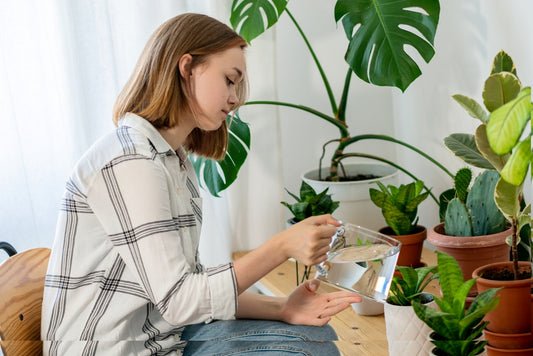Indoor plants bring beauty, fresher air, and tranquility into our homes. However, at times, your indoor garden may appear lackluster, with plants that seem dull, pale, or lethargic. If you find yourself in this situation, the solution might be as simple as providing the best fertilizer for your indoor plants, including the exceptional benefits of liquid compost. In this article, we'll explore the art of reviving indoor plants with the perfect fertilizer, ensuring they stay healthy and radiant for years to come.
Deciphering Your Indoor Plants' Nutrient Needs
Fertilizers, whether chemical or natural, are the lifeblood of plant health, growth, and development. Plants require essential nutrients like nitrogen, phosphorus, and potassium to flourish. The first step in choosing the best fertilizer for your indoor plants is to understand the unique nutrient needs of each species. For example, African violets thrive with higher phosphorus levels for vibrant blooms, while cacti prefer drier soil with minimal watering. Conduct thorough research or consult an expert to tailor your fertilizer selection to your plants' individual requirements.
Selecting the Perfect Fertilizer, including Liquid Compost
When selecting the ideal fertilizer, consider multiple factors, including the plant type, soil composition, and potting mix. For instance, if your potting mix contains peat moss, opt for a fertilizer rich in calcium to balance acidity levels. Conversely, when planting in alkaline soils, choose fertilizers containing sulfur, iron, and magnesium to maintain the proper pH. Explore the wonders of liquid compost, hailed as the best liquid fertilizer for plants, to invigorate your indoor garden.
Proper Fertilizer Application
Read and adhere to the package instructions when applying fertilizer, as overfertilization can harm your plants, leading to excessive foliage growth. Generally, fertilize your indoor plants every two weeks or as recommended by the manufacturer. If your plants are already stressed, administer fertilizer sparingly until they regain their vigor. Always water your plants before fertilizing to ensure even nutrient distribution.
Organic vs. Inorganic Fertilizers
The choice between organic and inorganic fertilizers is a matter of personal preference. Inorganic, or chemical, fertilizers are designed for precise nutrient delivery and act swiftly, while organic fertilizers are sourced from natural materials like manure, compost, and worm castings. Chemical fertilizers provide quick results, while organic options enhance soil quality over time, enabling plants to access micronutrients more readily.
Troubleshooting Common Fertilizer Issues
Even with the best intentions, indoor plants can encounter fertilizer-related problems, from stunted growth to yellowing leaves or burned tips. When faced with these issues, cease fertilization and evaluate the situation. For cases of overfertilization, flush the soil with water to remove excess nutrients. Yellowing leaves may indicate a need for a nitrogen-focused fertilizer, while burned tips may benefit from lower nitrogen and higher potassium options.
Nurturing Indoor Plant Health and Beauty with the Best Fertilizer, including Liquid Compost
Fertilizers hold the key to revitalizing your indoor plants when used thoughtfully. To succeed in this endeavor, understand your plants' nutrient needs, choose the best fertilizer, including the remarkable benefits of liquid compost, apply it as instructed, and closely monitor its impact. Following these guidelines, you can breathe new life into your indoor plants, ensuring they remain healthy and visually stunning for years to come. Revitalize your indoor garden with the finest!
Find the best compost liquid fertilizer at Certified Prevegenics for vibrant, healthy indoor plants. Shop now to elevate your gardening experience!



